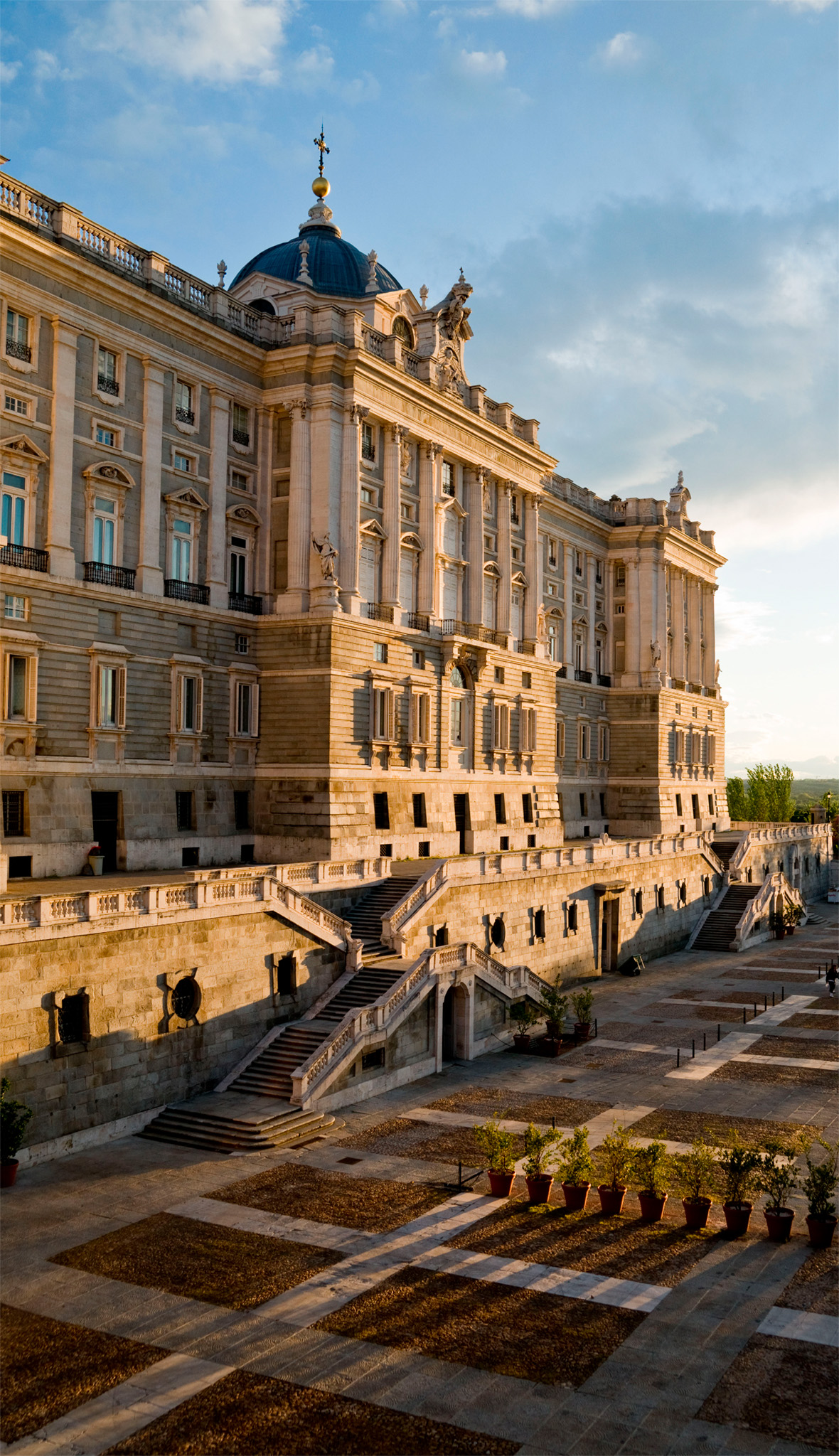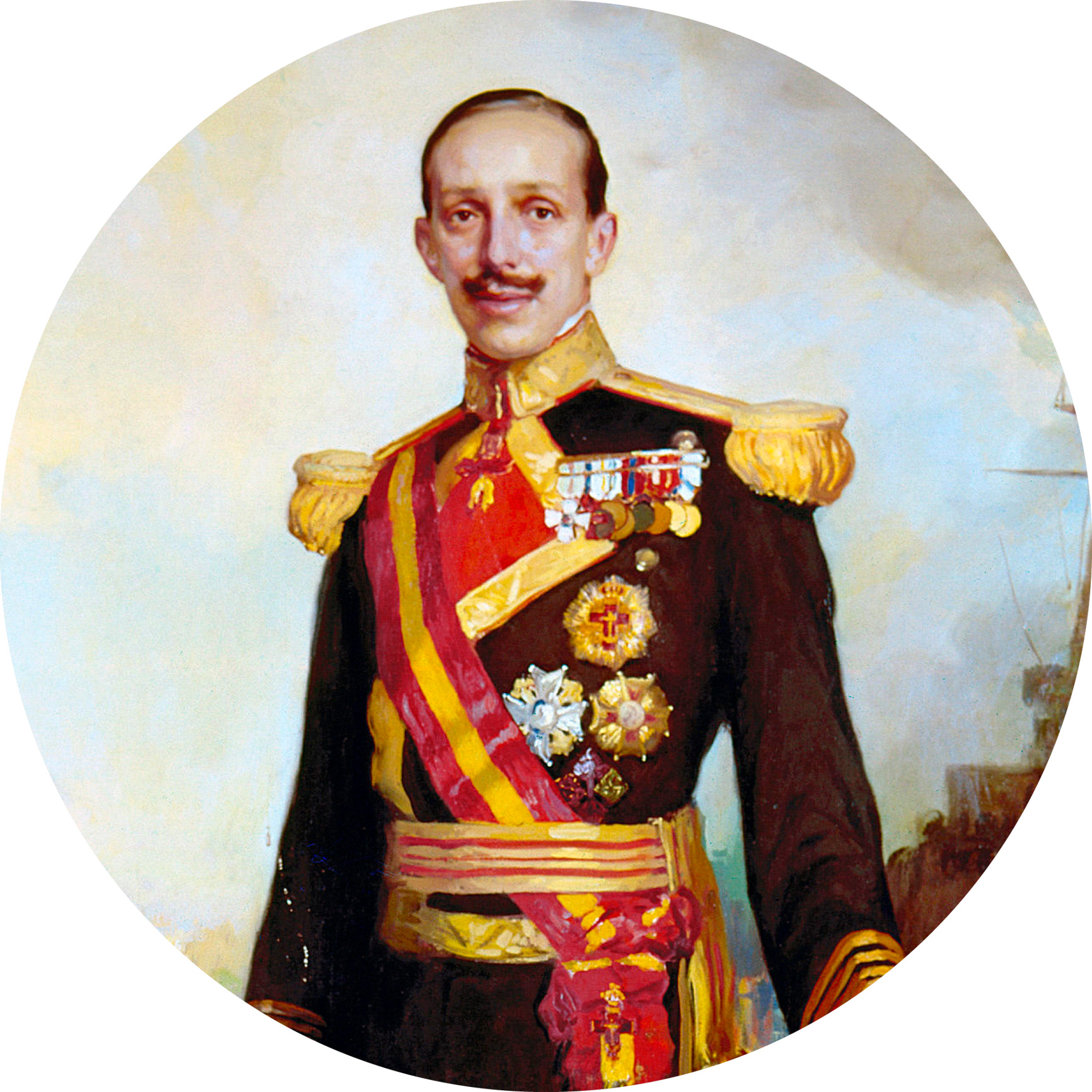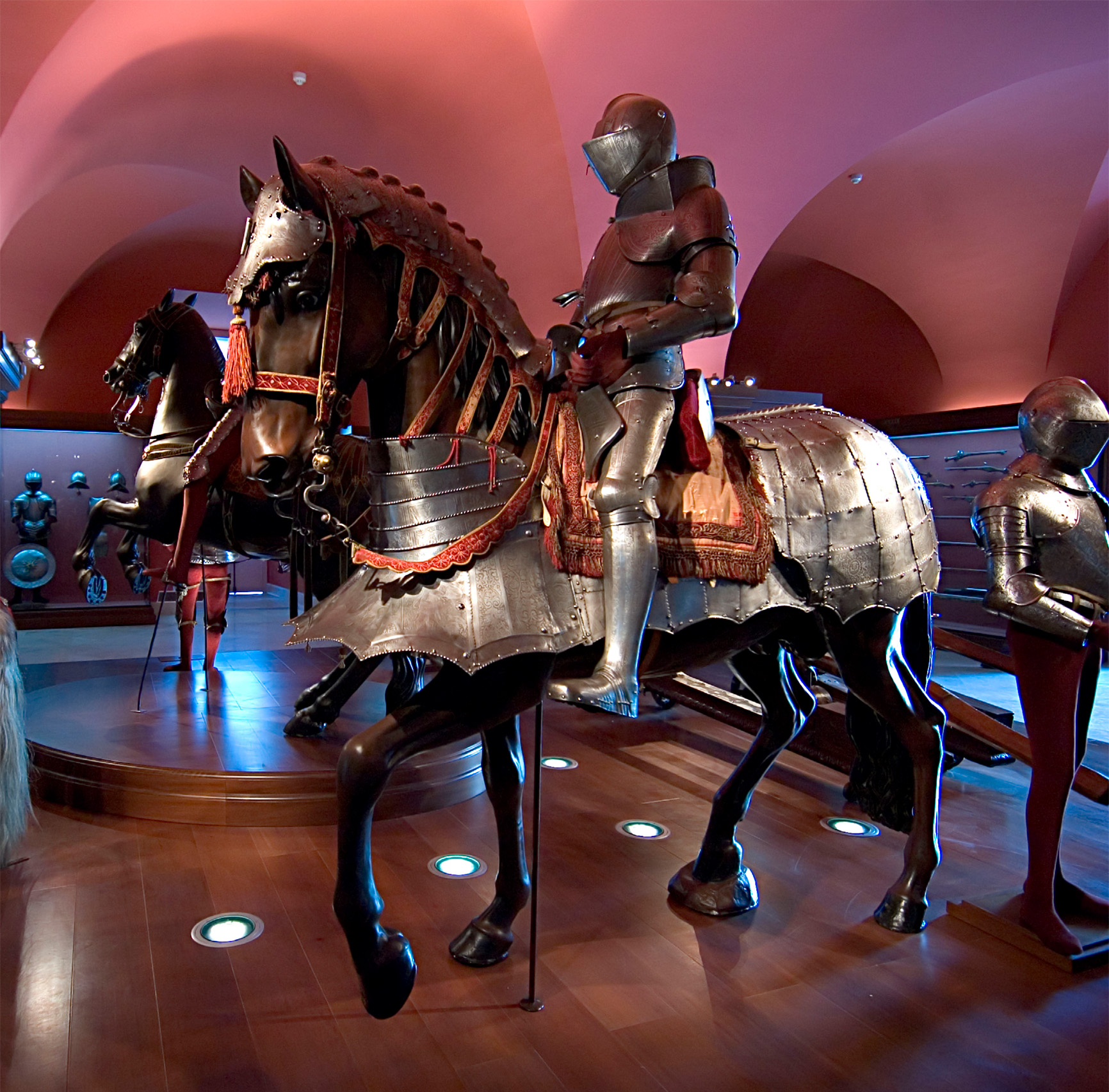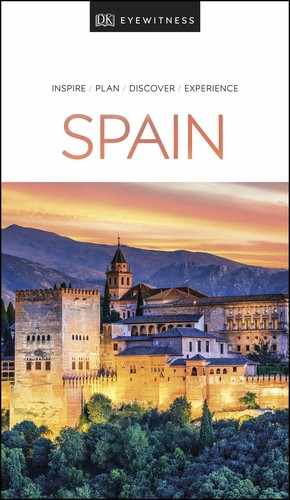g West Madrid g Contents
Madrid’s vast and lavish Royal Palace was built to impress. The site, on a high bluff over the Río Manzanares, had been occupied for centuries by a royal fortress, but after a fire in 1734, Felipe V commissioned a truly palatial replacement.

t Visitors climbing the Palacio Real’s grand marble staircase
Experience West Madrid

t The sun bathing the limestone north façade of the Palacio Real
This splendid Royal Palace stands on the site of the original Moorish fortress. After the reconquista of Madrid in 1085, this alcázar served as a residence for visiting royals. But, following extensive modifications in 1561, it became the residence of Felipe II until the completion of El Escorial in 1584.
A fire on Christmas Eve 1734, during the reign of Felipe V, all but destroyed the castle. This suited Spain’s first Bourbon king well – Felipe’s idea of a royal palace was the Versailles of his childhood, and so he commissioned a new royal palace decorated in the French style.
Most of the limestone building is the work of Giovanni Battista Sachetti, with later modifications by other architects. So vast was the plan that construction lasted from 1738 to 1755, by which time Felipe V was dead. His son, Carlos III, became the first royal resident and the palace was the home of the Spanish royal family until Alfonso XIII went into exile in 1931.

Insider Tip
Changing of the Guard
Every Wednesday and Saturday, soldiers march on the Plaza de la Armería, in front of the palace, to the sound of fifes, drums and horses’ hoofs. Get there early to get the best spot.
EXPERIENCE West Madrid
Timeline |

800s9th-century alcázar built. |

1561King Felipe II moves his court to Madrid. |
1734The old alcázar burns down. |

1738Construction of the palace begins under the orders of King Felipe V. |
1764King Carlos III moves into the newly built palace. |

1931King Alfonso XIII – the last monarch to live in the palace – decides on voluntary exile. |
Inside the Palace

t Crystal chandeliers illuminating the long table in the dining room
Unsurprisingly, the interior of the Palacio Real matches the grandeur of its façade. It is remarkable both for its size and for the exuberant furnishings found in many of the rooms, including luxurious carpets, massive tapestries and glittering silverware. Take a guided tour or carve your own route through some of the 2,800 rooms to see this decor and some fascinating treasures from the royal collection, including glittering suits of armour, masterpieces by Goya and finely tuned violins.
Did You Know?
The Palacio Real is the largest castle in Europe by floor area.
EXPERIENCE West Madrid

Palace Highlights
Stairway to Heaven
Frescoes by Corrado Giaquinto preside over the Toledo marble stairs.
19th-Century Table
The charter by which Spain joined the EU was signed on this table in the Salón de Columnas.
3D Wallpaper
In the Sala de Porcelana, Buen Retiro porcelain covers the walls.
Stradi-various
Off the dining room, there is a room of violins.
Shining Armour
In the armoury, check out Carlos I’s elaborate suit.
EXPERIENCE West Madrid
Palace Rooms |
Entrance RoomsThe first port of call is the Salón de los Alabarderos (Hall of the Palace Guards), decorated with a fresco by Tiépolo. Adjoining it is the Salón de Columnas (Hall of Columns), which served as the banquet hall until the new dining hall was incorporated in the 19th century. Today it is used for receptions and functions. Next, visitors enter the Rococo Salón del Trono (Throne Room). Completed in 1772, it has two rock crystal chandeliers, numerous candelabra and mirrors, and walls of crimson velvet with silver embroidery. The twin thrones are recent (1977), while the bronze lions that guard them date from 1651. The room is still used for functions, such as the royal reception on the Día de la Hispanidad or the yearly reception for the diplomatic corps posted in Madrid. |

Carlos III RoomsLeading off from the Salón del Trono are the king’s private chambers. He would take his meals in the Sala de Gasparini – lonely affairs considering the queen had her own dining room. In the Cámara de Gasparini, with its stucco ceiling and embroidered silk walls, the king would be dressed in the presence of courtiers. |
Dining RoomThis 400-sq-m (4,300-sq-ft) banquet hall was formed in 1879 when the queen’s private chambers were joined together, during the reign of Alfonso XII. It is richly adorned with gold plate decoration on the ceiling and walls, frescoes, chandeliers, Flemish tapestries, Chinese vases and embroidered curtains. The table can accommodate up to 160 diners. The room immediately off the dining hall is devoted to commemorative medals, and also contains the elaborate centrepiece used during banquets. Other rooms contain silverware, china, crystal and an extraordinary collection of musical instruments. |
Chapel RoomsBuilt in 1749–57, the chapel is still used for religious services, and also for musical soirées. While the decor is luxurious, it is the dome, with its murals by Giaquinto, that immediately catches the eye. Next, visitors pass through the Salón de Paso and into María Cristina’s chambers. During the reign of Alfonso XII these four small rooms served as an American-style billiards room, Oriental-style smoking room, the Salón de Estucos (queen’s bedroom) and the Gabinete de Maderas de Indias, used as an office. |

Royal ArmouryReturning to the Plaza de la Armería, near the ticket office, you come to the Real Armería (Royal Armoury), which is housed in a pavilion built in 1897 after the original armoury was destroyed by fire. It contains weapons and royal suits of armour. On display is an elaborate suit of armour which once belonged to Carlos I. The armoury could be considered as Madrid’s first museum because it has been open to the public since Felipe II inherited the collection from his father. |
